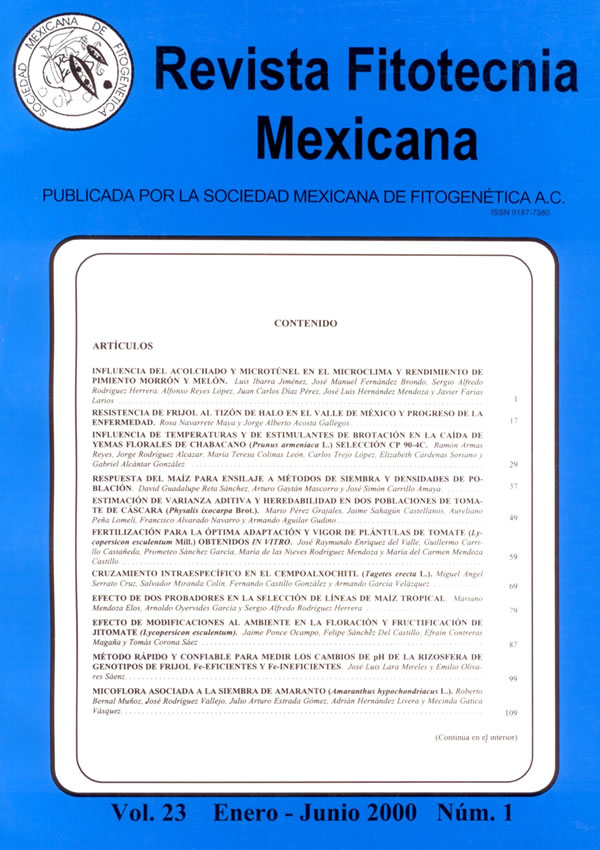INTRASPECIFIC CROSSING IN MEXICAN MARYGOLD (Tagetes erecta L.)
Main Article Content
Abstract
In order to study the intraspecific crossing in mexican marigold (Tagetes erecta L.) and its implication on domestication process in this plant, self- and outpollination in both cultivated and wild T. erecta subspecies were induced. Seed set was lower (17 %) in wild subspecies than in cultivated one (74 %) by selfpollination; high seed set (91 to 95 %) in both subspecies was produced by outpollination. Low germination (0-4 %) in seeds of wild subspecies from outpollination was detected, but it was 19-31 % when seeds were obtained from selfpollination; high germination in seeds of cultivated subspecies was observed, 93-96 % and 100 % from selfand outpollination, respectively. Normal floral traits in wild progeny plants from outpollination were produced, but those plants from selfpollination shown a high floral expression near to cultivated subspecies floral traits; on the other hand, high floral expression was shown by cultivated species better from outpollination than from selfpollination. Seed set in wild progeny obtained from outpollination was poor (6 %) but it was good (24 %) in plants produced from selfpollination; seed set in cultivated progeny was high, 32 % and 62 % in plants from out- and selfpollination origin, respectively. Responses in wild progeny obtained by outpollination had similar tendency to those observed in cultivated progeny, which it supports the purpose that selfpollination in wild subspecies was able to develop morphological changes in progenies that eventually could have been selected along domestication process in T. erecta.

